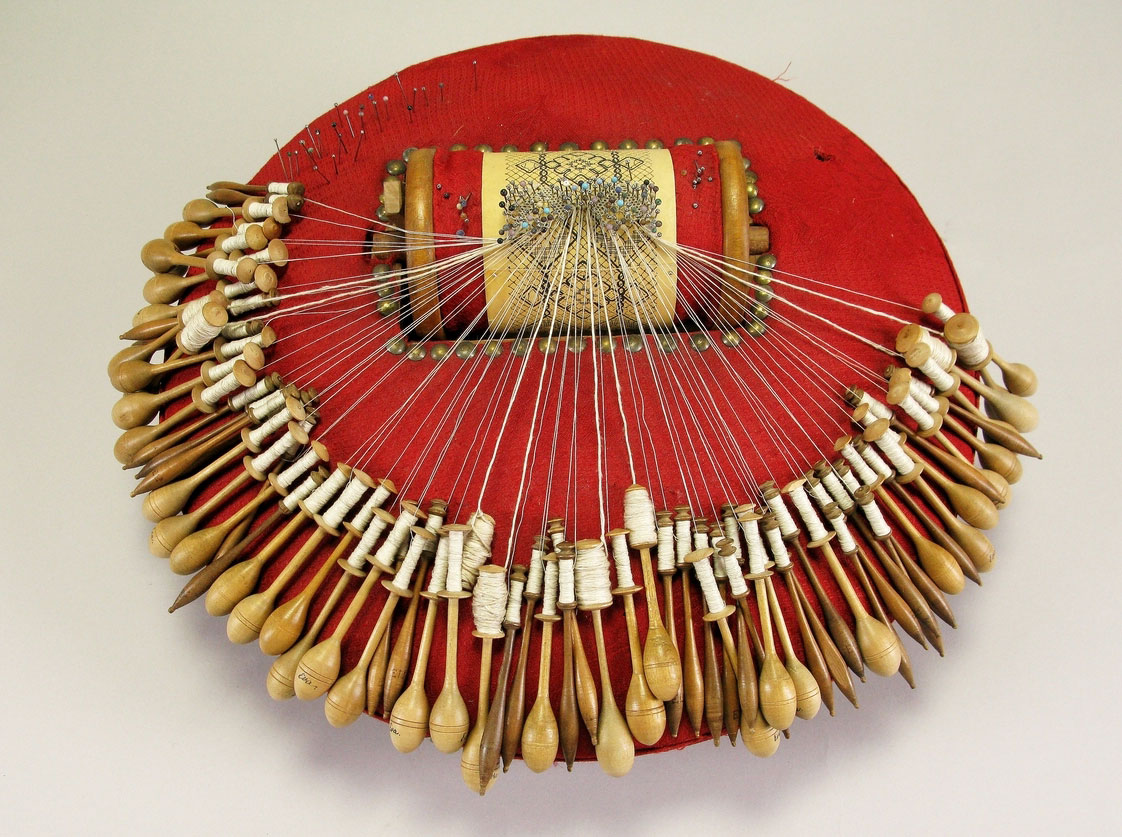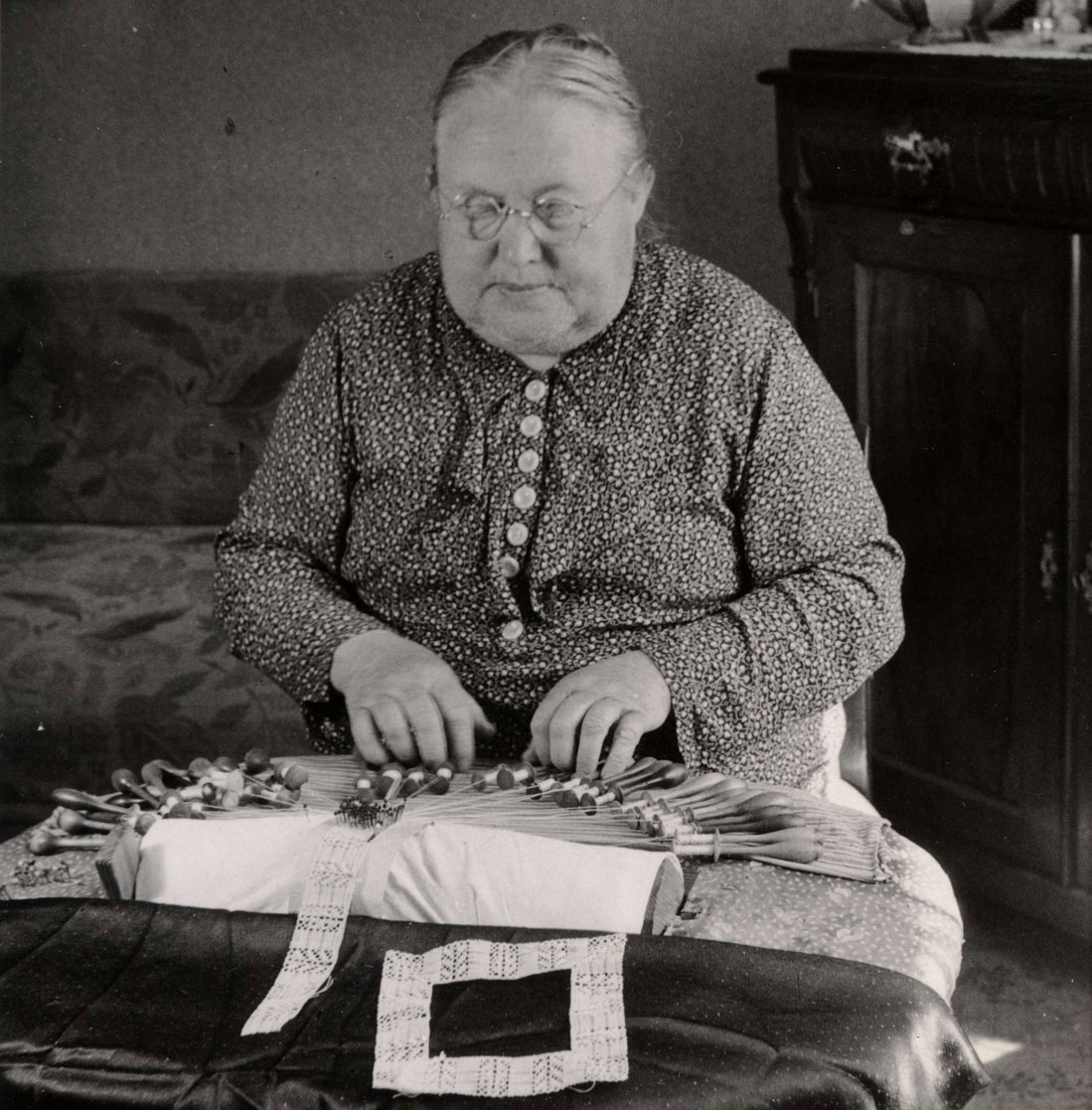- Startpage
- In English
- The Inventory
- Vadstena lacemaking
Vadstena lacemaking
Lacemaking involves braiding threads with the aid of lace-bobbins and a number of flax threads. The threads are braided and patterns are created on a cushion. A paper template with pricked holes showing where to place the needles is fastened onto the roll of the lace cushion. Traditionally lace was used for clothes, sheets and tablecloths etc.
Location: Mainly Vadstena, but also other parts of Sweden, for example Göteborg.
Lacemaking was developed in Italy in the 15th century and then spread throughout Europe. Lace became modern in Sweden among the upper classes in the mid 16th century. The making of lace began here in the early 17th century when lace cushions were imported to Stockholm. Eventually the use of lace spread to country people.
In Vadstena, lacemaking was organised in the 19th century as a type of work that was done at home, with lacemakers receiving payment from the lace coordinator. During industrialisation, handmade lace was unable to compete with machine-made lace, which were significantly cheaper to produce. In the late 19th century, efforts were made to support the craft, efforts including orders from the royal court. The technique has been transferred to southern and central Sweden and has then spread throughout the country. Vadstena lacemaking is now also practised in cities such as Linköping and Gothenburg.
The use of lace has gradually decreased as has the role lace plays in home decoration. The Swedish arts and crafts movement drew attention to lace as an example of a tradition with strong roots in the Swedish textile tradition. Consequently, in spite of tough competition from machine-made lace, traditional lace-making is still alive. It has gradually developed into a freer art form that has space for new materials such as metal for making jewellery.
Nowadays associations like Föreningen Svenska Spetsar (FSS) are responsible for preserving the tradition through means such as courses and exhibitions. Adult educational associations also arrange lacemaking courses throughout the country.
.jpg)
Photo: Lilian Blomdahl-Vadasz/Nordiska museet (CC BY-NC-ND).


